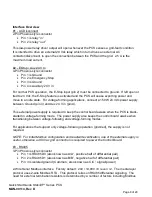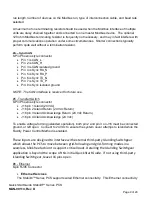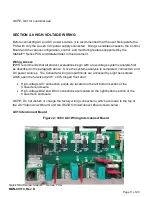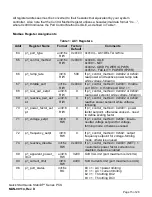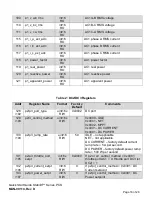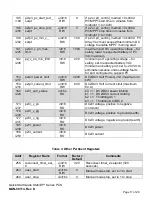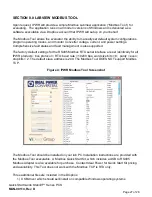
Page 21 of 28
Quick Start Guide Stabiliti™ Series PCS
MAN-00114, Rev D
NET Control Method (0x0001)
To move power amoung active ports, one and only one port on the PCS MUST ALWAYS be set
to the NET Control Method, allowing that NET port to satisfy all bi-directional power flows
demanded by the remaining port(s), which will typically be assigned a power, current, or MPPT
Control Method.
DC POWER Control Method (0x0401)
The POWER Contr
ol Method (“PWR”) uses a sign to indicate direction of DC2 and DC3 port
power flow, with a scaling factor of 10 Watts. For example, a kW setpoint of -500 on DC3
commands the port to import into the Converter at a 5 kW level (discharge a battery connected
to DC3); 1500 on DC3 exports out of the Converter at a 15 kW rate (charges the DC3 battery).
DC CURRENT Control Method (0x0301)
The DC CURRENT (“DCA”) Control Method uses a sign to indicate direction of DC port current
flow, with a scaling factor of 100 mA. For example: a current setpoint of -500, on DC3
commands the port to import a fixed 50 A (discharge the battery); 300 will export (charge the
DC3 battery) at a fixed 30 A.
Note that these constant current flows are maintained by the Converter, independent of battery
voltage, with a DC port maximum current of 60 A.
MPPT Control Method (0x0002)
The Maximum Power Point Tracking (“MPPT”) Control Method is used only when a PV array is
connected to DC2 or DC3. Note that the pv_start_time registers and pv_stop_time registers
define when the MPPT Control Method is enabled. Start/stop values in the range of 0 to 1440
reflect the use of an
internal “minute clock”, where 0 corresponds to midnight. For example:
programming 450 in the start register reflects a start time of 7:30 AM.
GPWR Control Method (0x0402)
The GRID POWER
(“GPWR”) Control Method commands the Converter to voltage-follow. In
this configuration, with factory defaults unchanged, the converter responds to all grid-fault
conditions in a manner that is compliant with UL 1741 and IEEE 1547A.
FPWR Control Method (0x0502)
The FACILITY POWER
(“FPWR”) Control Method is used for two unique types of applications:
1. Interactive voltage-following / voltage forming applications, where external third-party
islanding switchgear is incorporated into the system design to facilitate rapid and blink-
less transfers between voltage-following and voltage-forming mode (and back again),
while ensuring while in voltage-forming mode, the PCS remains safe and never back-
feeds the grid.
OR,


